
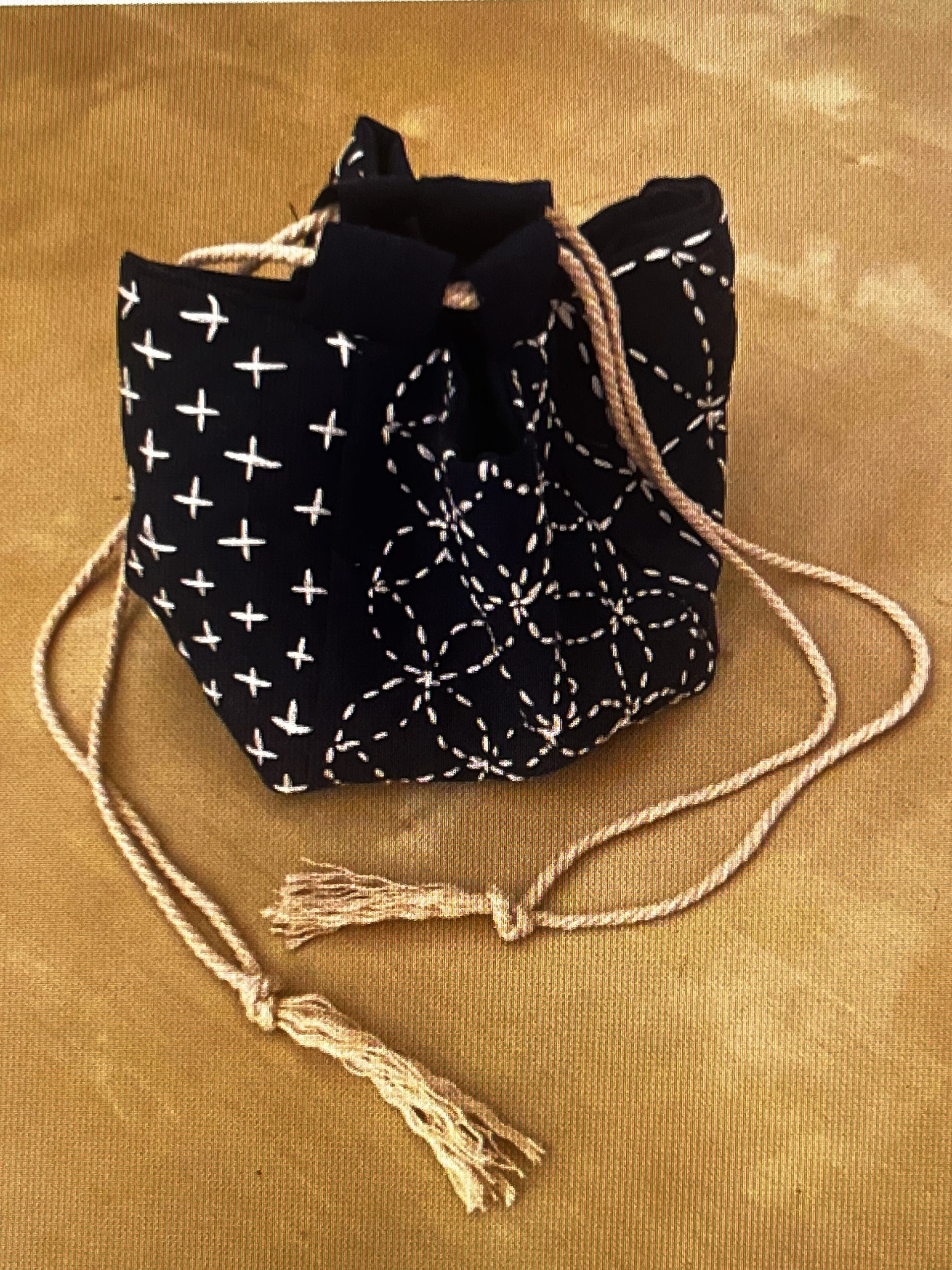
Rebekah Walker (she/they)
3rd year, Art History
Shashiko Komebukuro
polyester cotton blend, cotton six-stranded embroidery floss, and macrame cord
2023
Description:
Rebekah Walker (she/her) is an artist and art historian currently in her third year of Art History at Concordia University in Tiohtià:ke (Montreal). Her work focuses on craft theory and discourse, exploring them as contemporary forms of political action and radical care. Many of her projects combine textile art practice with making-based research, where both the art and the subject inform and shape each other.
Ultimately, Rebekah aspires to pursue a career in Canadian decorative arts and textile curation. Through her work, she aims to dissect the complexities of craft as a gendered, socialist, and material art form. She is particularly interested in exploring the connections between craft, community, and private life.
The object of inquiry explored over the course of this project is the Komebukuro, also known as the Japanese Rice bag, decorated with the Sashiko stitch method. Instead of taking the traditional approach, I decided to take on the contemporary ideas about Sashiko’s sustainable and mending qualities. One mode of interpretation takes the form of Mottanai, a Japanese word that means “to waste nothing.” This concept prioritizes the reuse and mending of materials, as well as the use of every piece of material in the creation of a garment. It is an ancient tradition that has seen a revitalization in the past few decades as climate change becomes a prevalent issue in the everyday lives of people around the world.
Read Rebekah’s full paper, Investigating Sustainability Through Japanese Textile Art Practices, the first two pages seen below, by clicking here to download.
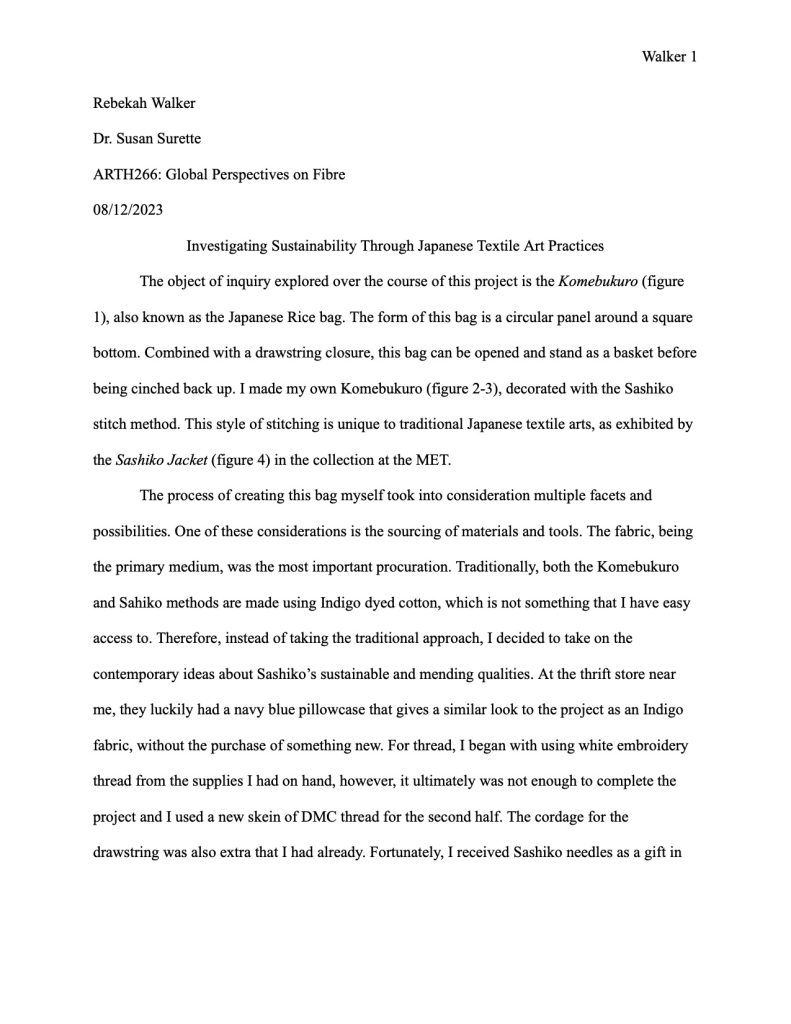
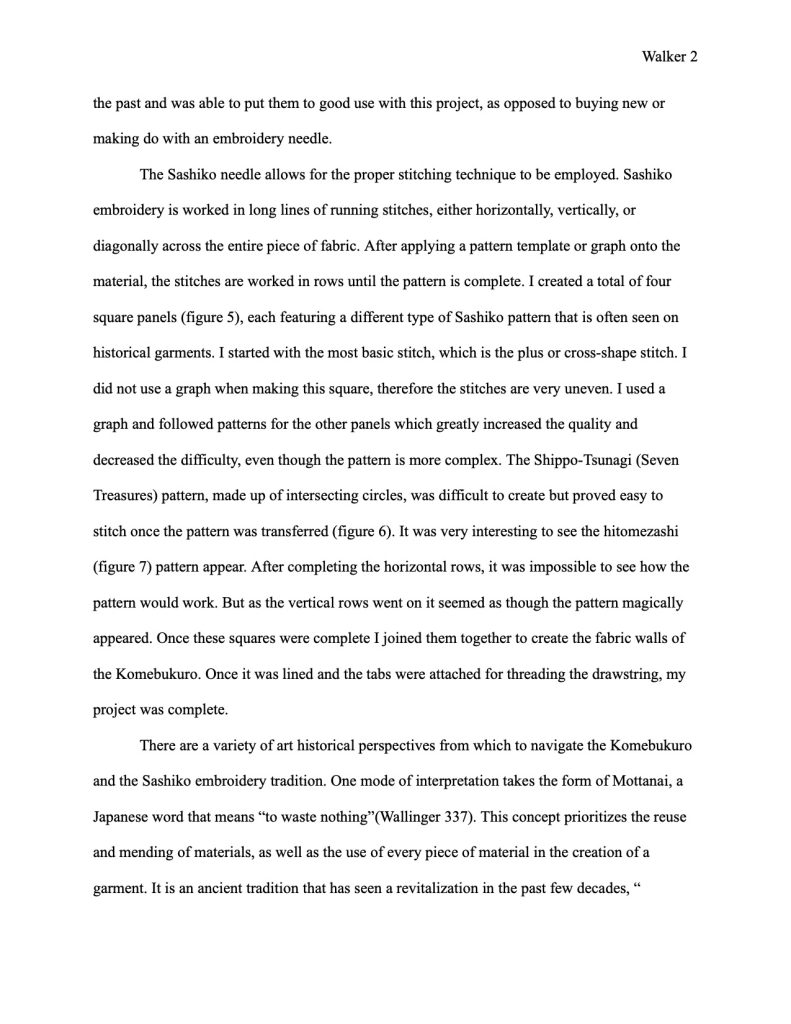
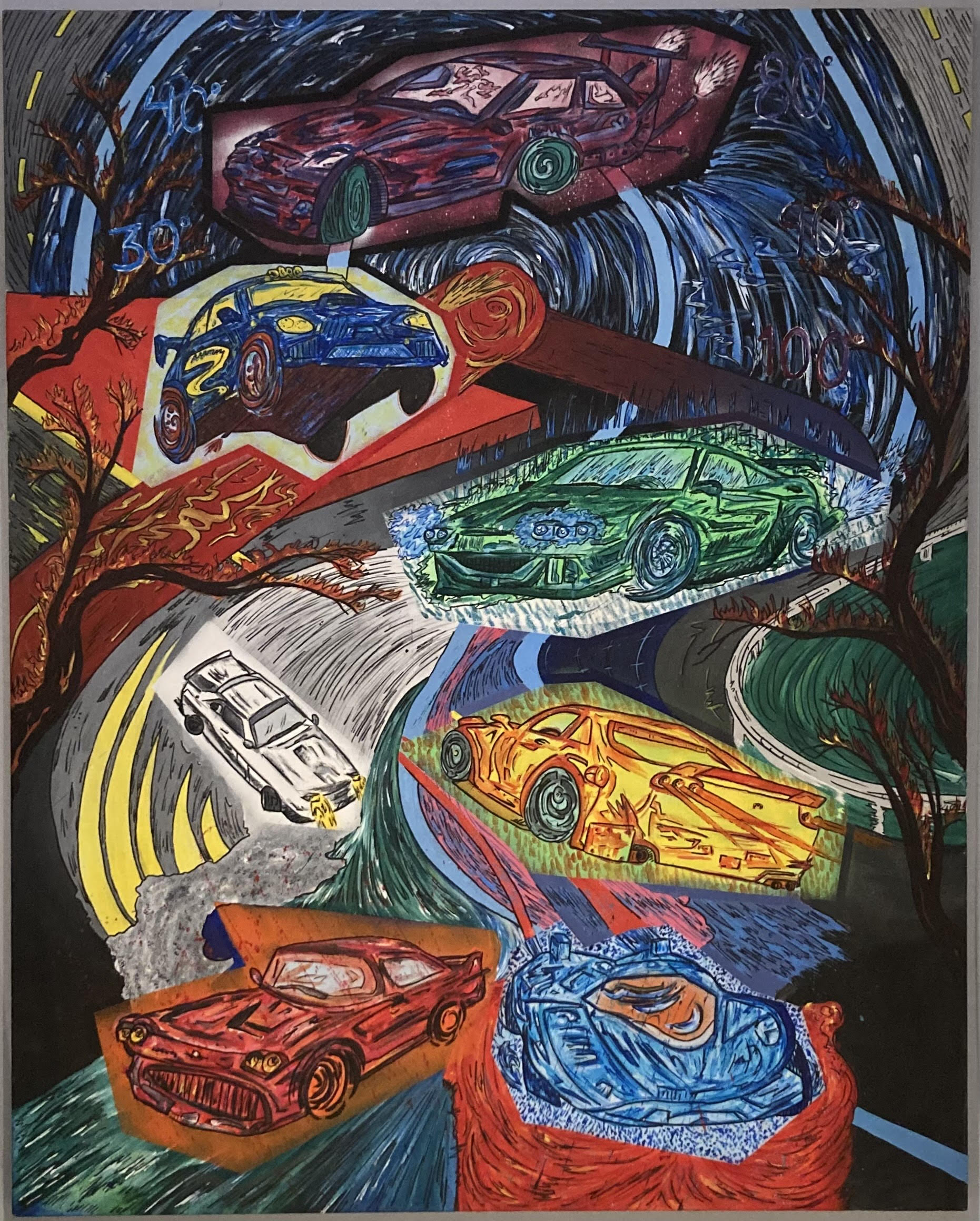
Nathan Theriault (he/him)
1st year, Art Education
#1 Cost
60 x 45 inches
Acrylic on Canvas
2024
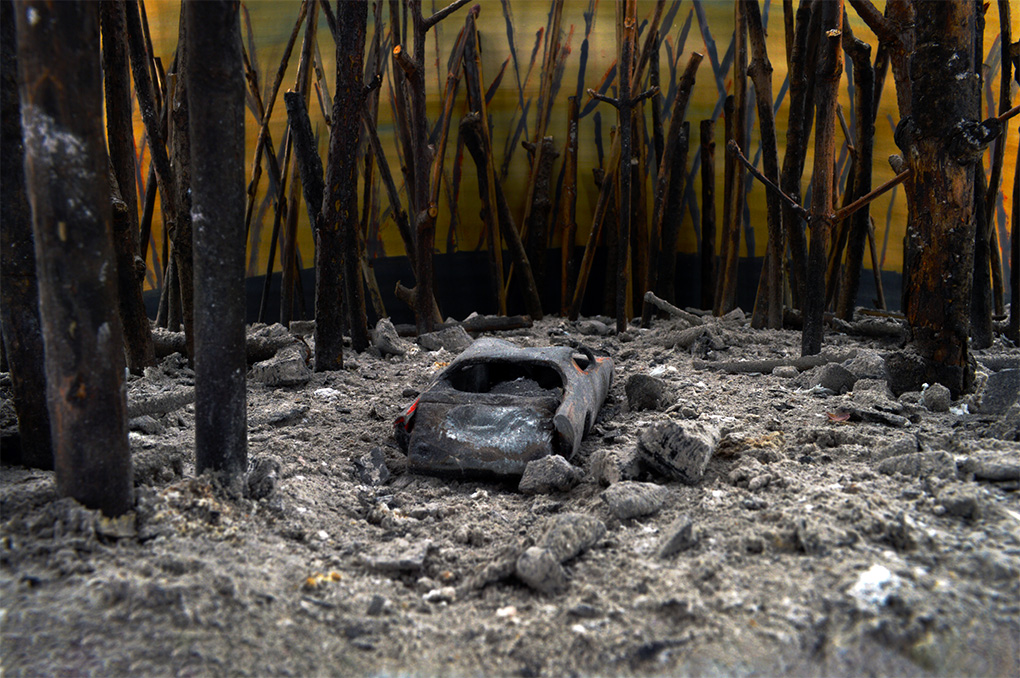
#2 Through the Flame
18 x 12 x 13 in
Toy car, ash, sticks, styrofoam, cardboard, acrylic
2022
Description:
Nathan Theriault studied in the Visual Arts Program at John Abbott College for three years, where he developed a deep passion for art and the art-making process. After graduating, he chose to share his passion with others through teaching. Nathan is currently completing his first year in the Art Education Major at Concordia University, with plans to apply for specialization when the time comes. Art holds a vital place in his life, and he cares deeply about helping others find their own connection to it.
Nathan’s large-scale painting, Cost, was created as a commentary on society’s obsession with flashy vehicles. The painting is reminiscent of a Hot Wheels poster, with bright, attention-grabbing colors and movements. On the perimeter of the painting, the silhouettes of burning trees desperately try to catch the viewer’s attention but are overshadowed by the vibrant cars. Nathan created this piece as a mirror of contemporary society, where consumers often focus on the next big thing without considering the cost. Theriault loves cars, and by exploring this theme in his painting, he found a way to reflect on both his personal passions and their environmental impacts. The speedometer in the background of the painting is positioned at eye level, with temperature degrees subtly incorporated next to the speed values. This dual depiction highlights the connection between a car’s speed and the rising temperature of the planet. The painting plays with the theme of needs versus wants—where we need the environment to survive but often prioritize our desires for pleasure over what is necessary for our well-being.
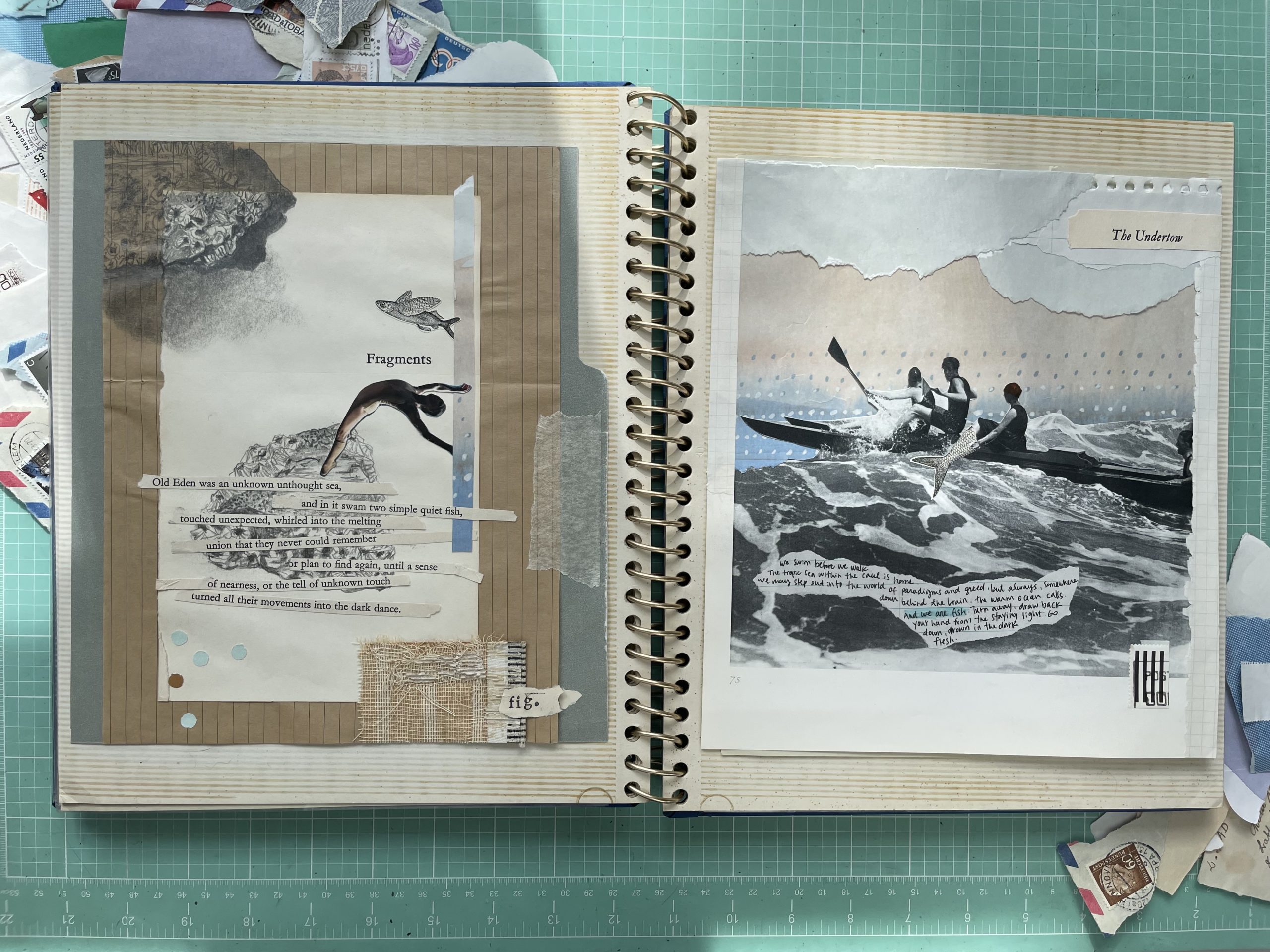
Maryse Rapsomatiotis (she/her)
2nd year, Art Education
Memories Repurposed
10″ x 12″ x 1″
paper, glue and vintage photo album
2024
Description:
Maryse Rapsomatiotis’ artistic practice revolves around the ocean, both as a subject and a metaphor, explored through graphite, charcoal, watercolor, acrylics, and collages. With a background in interior and graphic design, she is drawn to visual storytelling over words. Her creative process is slow and intentional, with each color palette, theme, and subject carefully chosen, much like curating a mood board or conceptualizing a visual identity. Growing up in a modest home, Maryse learned to make do with what was around, an ethos that shaped her ability to see potential where others might not. She found joy in creating layouts from old Sears catalogs, National Geographic magazines, stamps, and paper scraps in self-adhesive photo albums. This resourceful mindset carries into her work today, where sustainability is central to her practice. By reusing and repurposing materials, she gives discarded artifacts new life, transforming them into meaningful compositions rather than letting them fade into obscurity. In “Memories Repurposed“, a collage project inspired by David Helwig’s poem “The Undertow”, Maryse reimagines cultural remnants—such as a musty photo album, discarded photos of strangers, and vintage books and magazines—into art that speaks to memory, impermanence, and renewal. By connecting elements never meant to coexist, she is, in a way, rewriting history while also reducing waste. Through her work, Maryse aims to demonstrate how art can breathe new life into the overlooked, proving that even what is discarded still holds meaning.

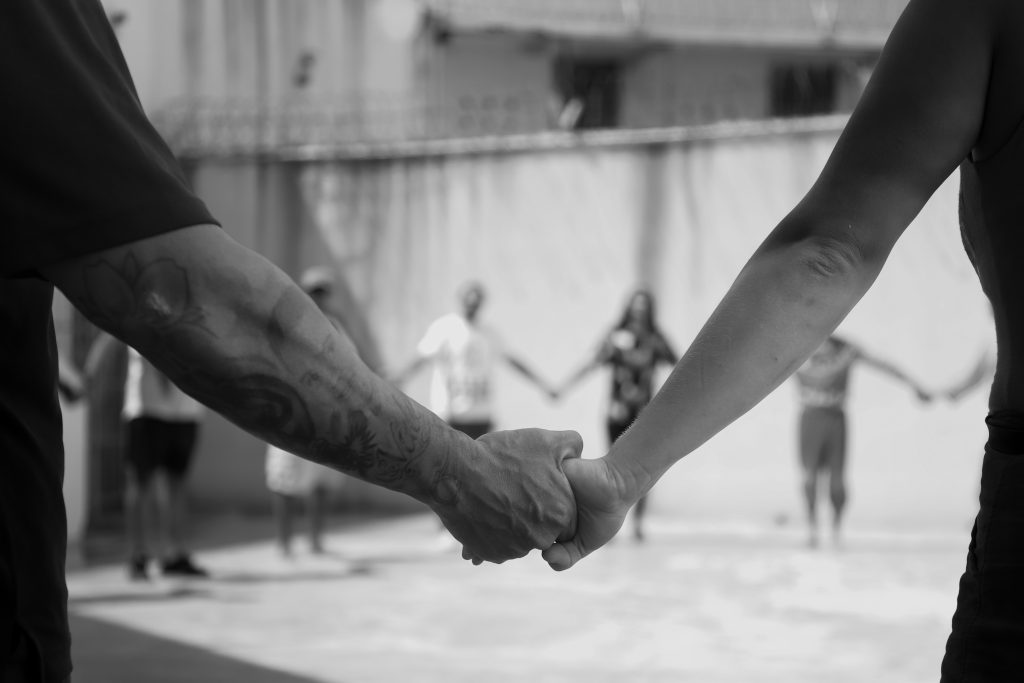
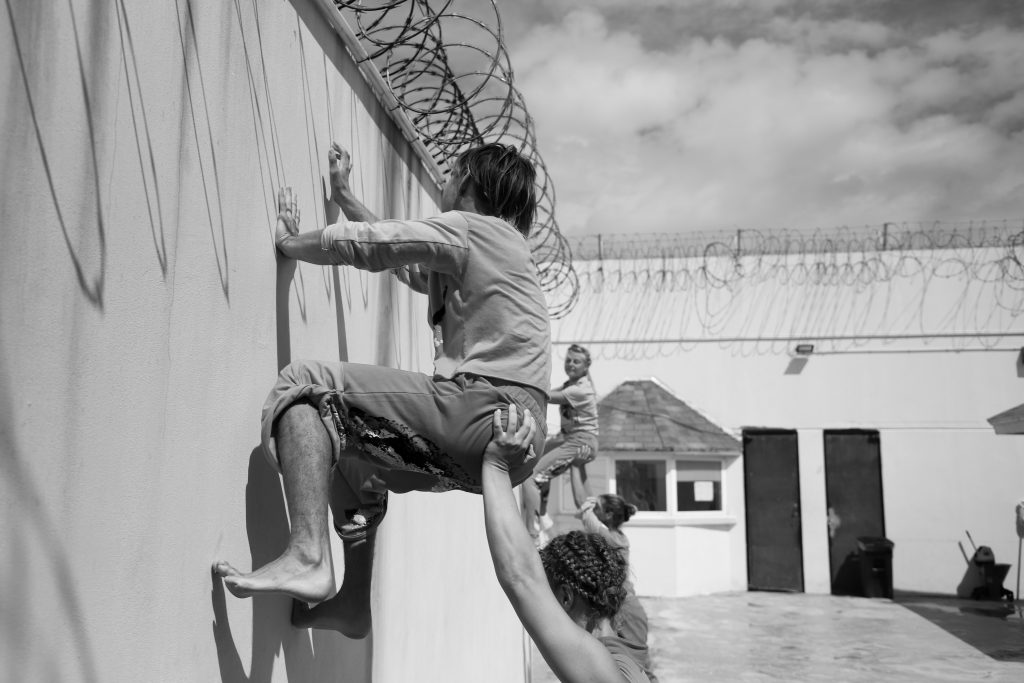
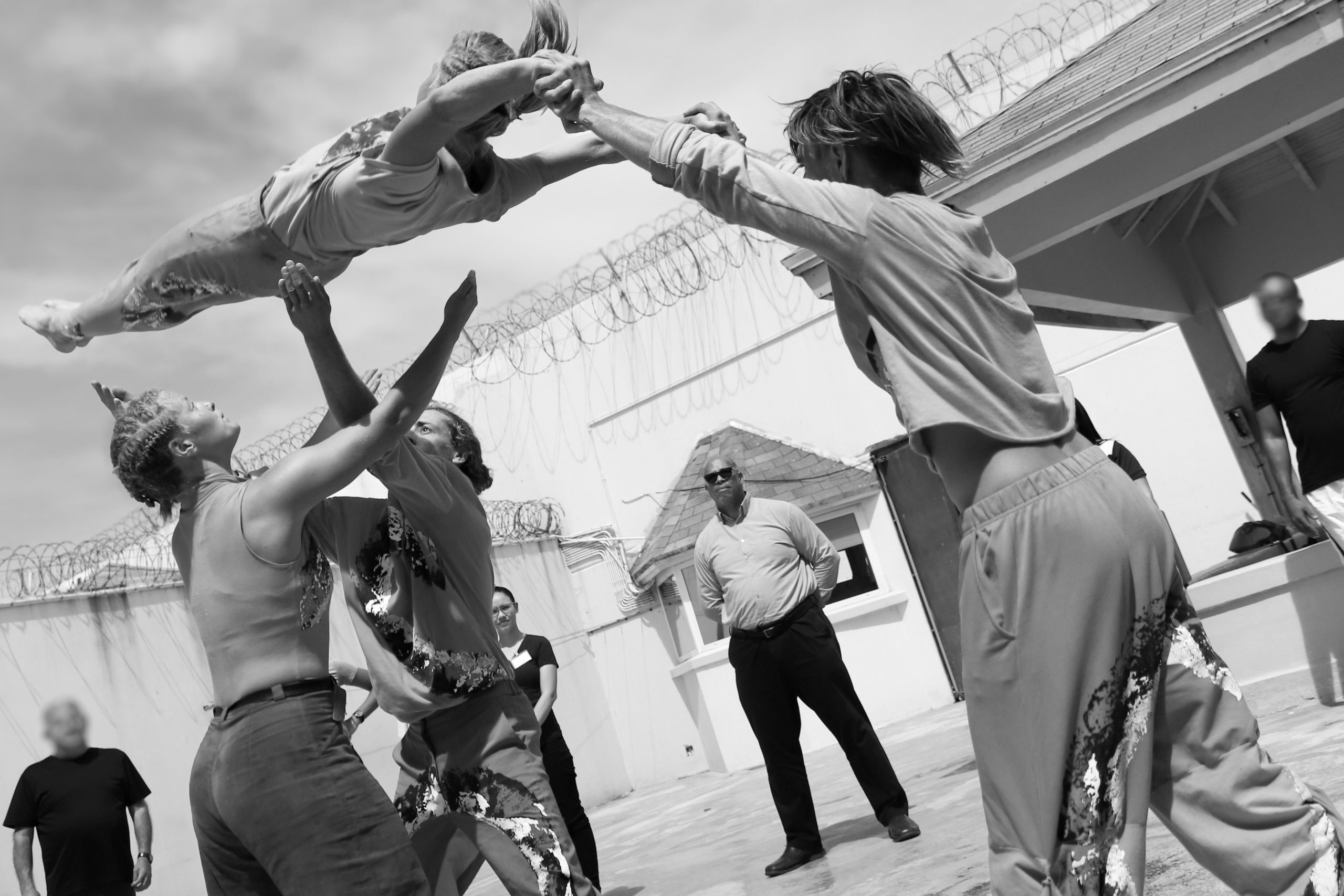
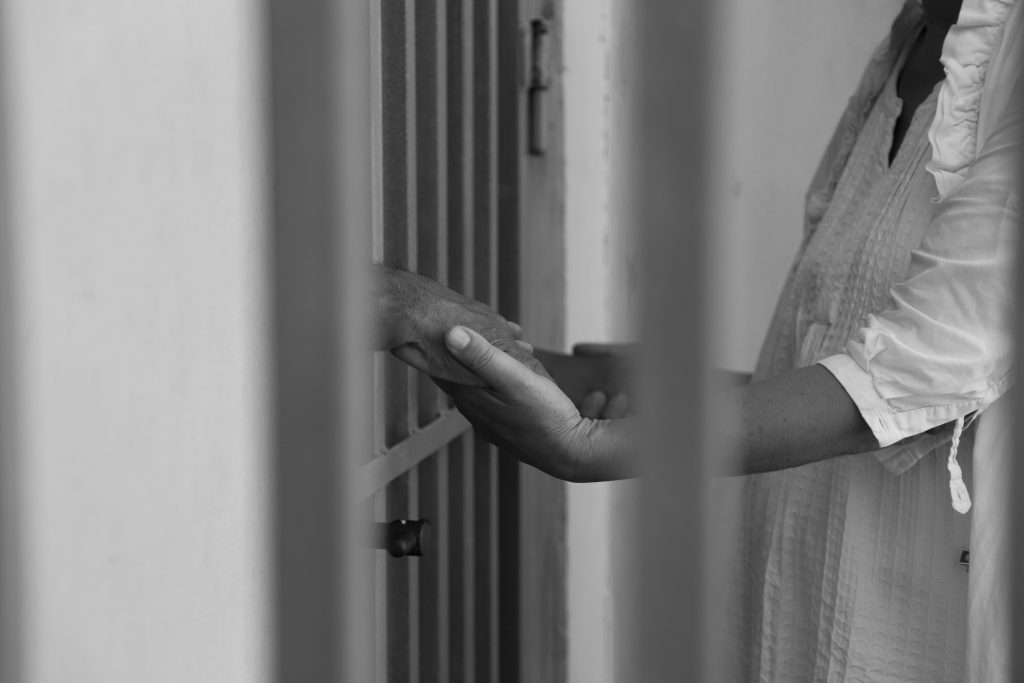
Karolina Dobiszweska
film production BFA, 3rd year
Lift Me Where I Stand
8 x 12 in
Photography (digital)
2024
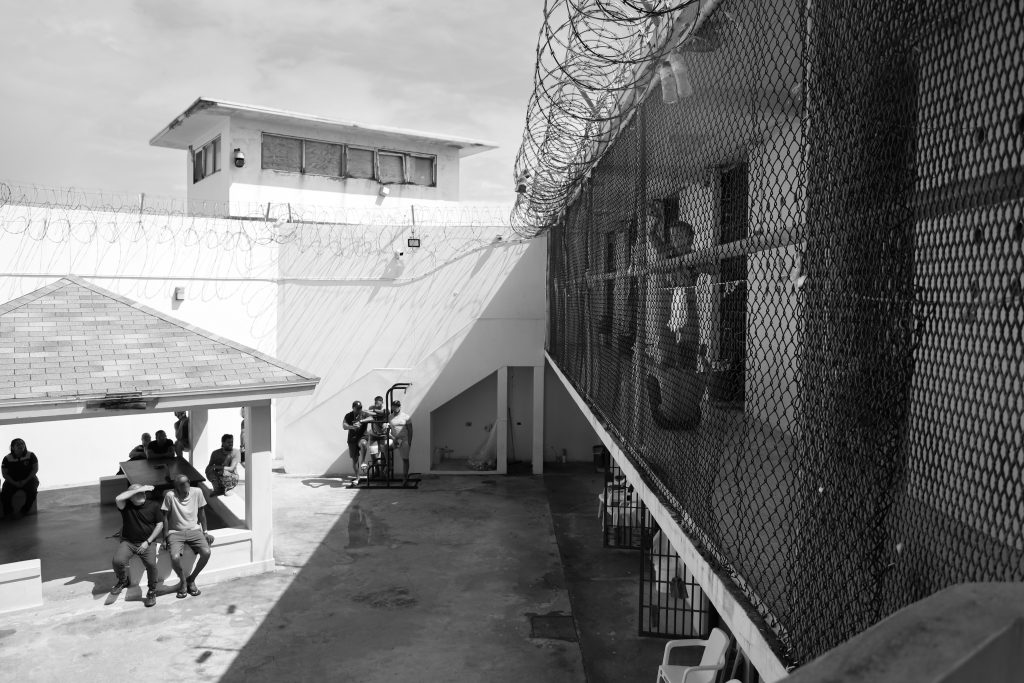
Description:
Karolina Dobiszewska, also known as Karo Dobi, is a Polish-Canadian photographer and filmmaker based in Montréal, studying Film Production at Concordia University. Her work blends fiction, documentary and artistic storytelling, often exploring themes of freedom, identity, and human connection. The series Lift Me Where I Stand, was created during a visual internship with Tur Cos Ta Posibel & Currents for Climate in February 2025 on the island of Aruba. The photographs document a powerful collaboration between artists and incarcerated individuals during a social circus performance inside a national prison. In a space marked by confinement, the project offered a moment of shared humanity, movement, and emotional release. This work aligns with environmental sustainability by emphasizing the interconnectedness of social and ecological justice. Currents for Climate uses wind-powered sailing to reach communities and foster dialogue around climate resilience, emphasizing how cultural and emotional healing is part of sustainable futures. These images aim to remind viewers that sustainability isn’t just about nature—it’s about people, dignity, and the possibility of transformation, even in the most unexpected places.
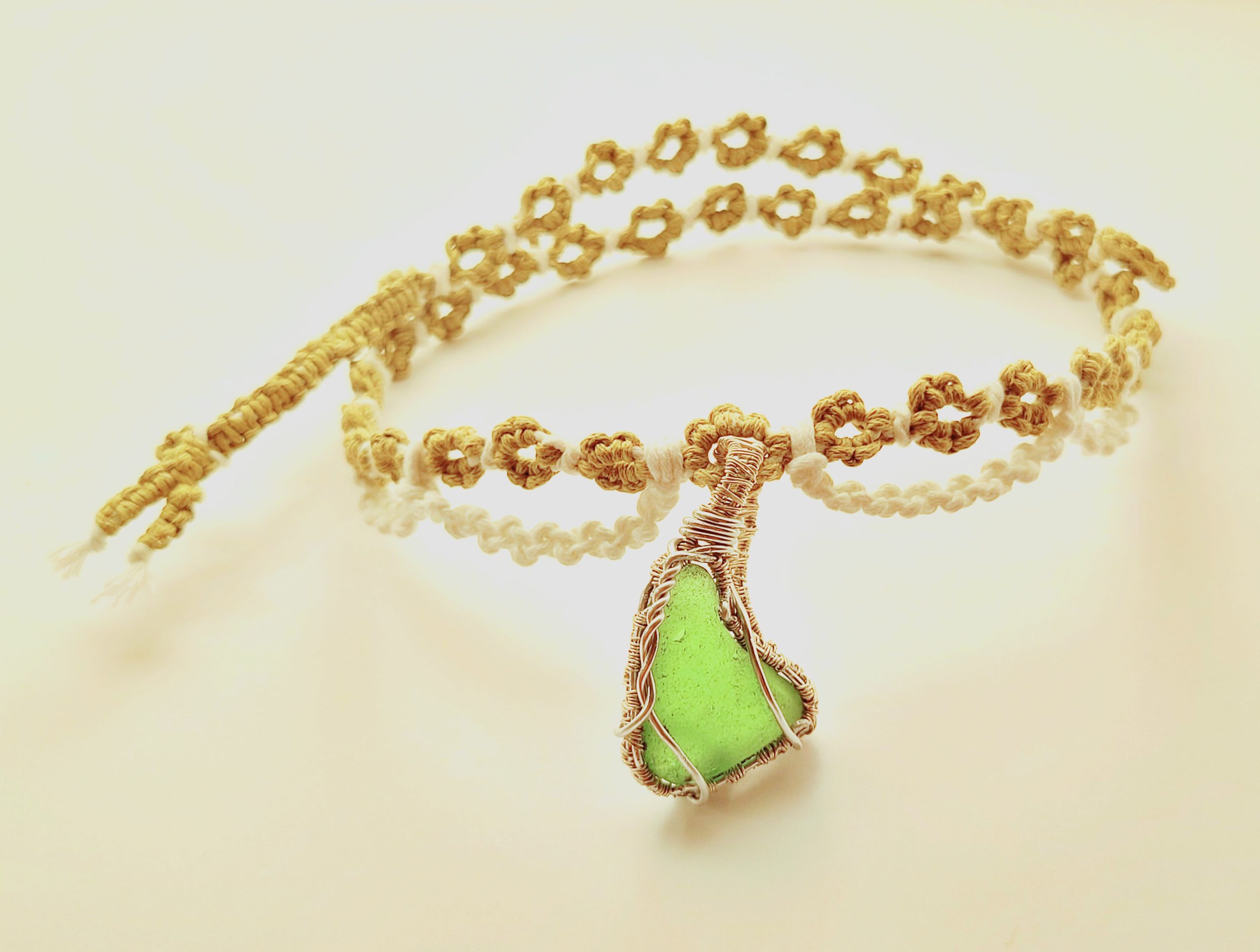
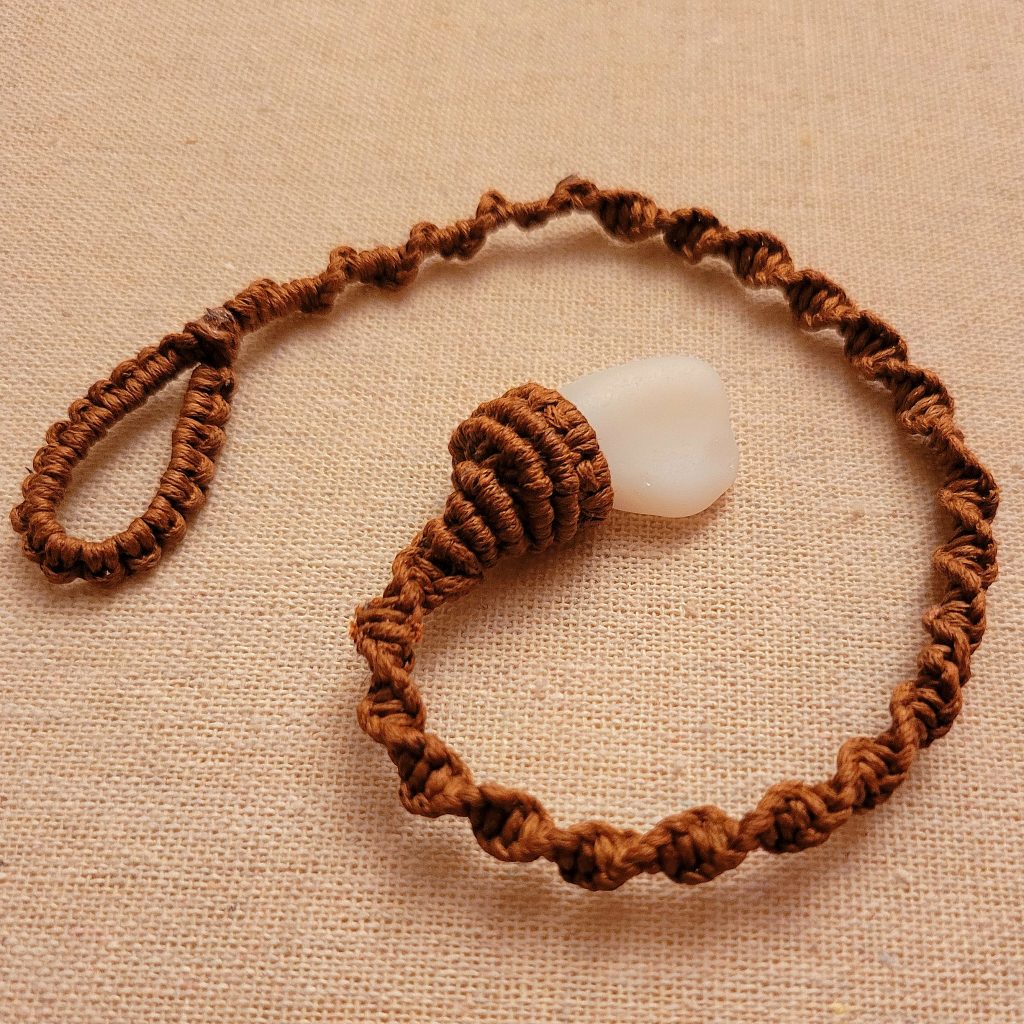
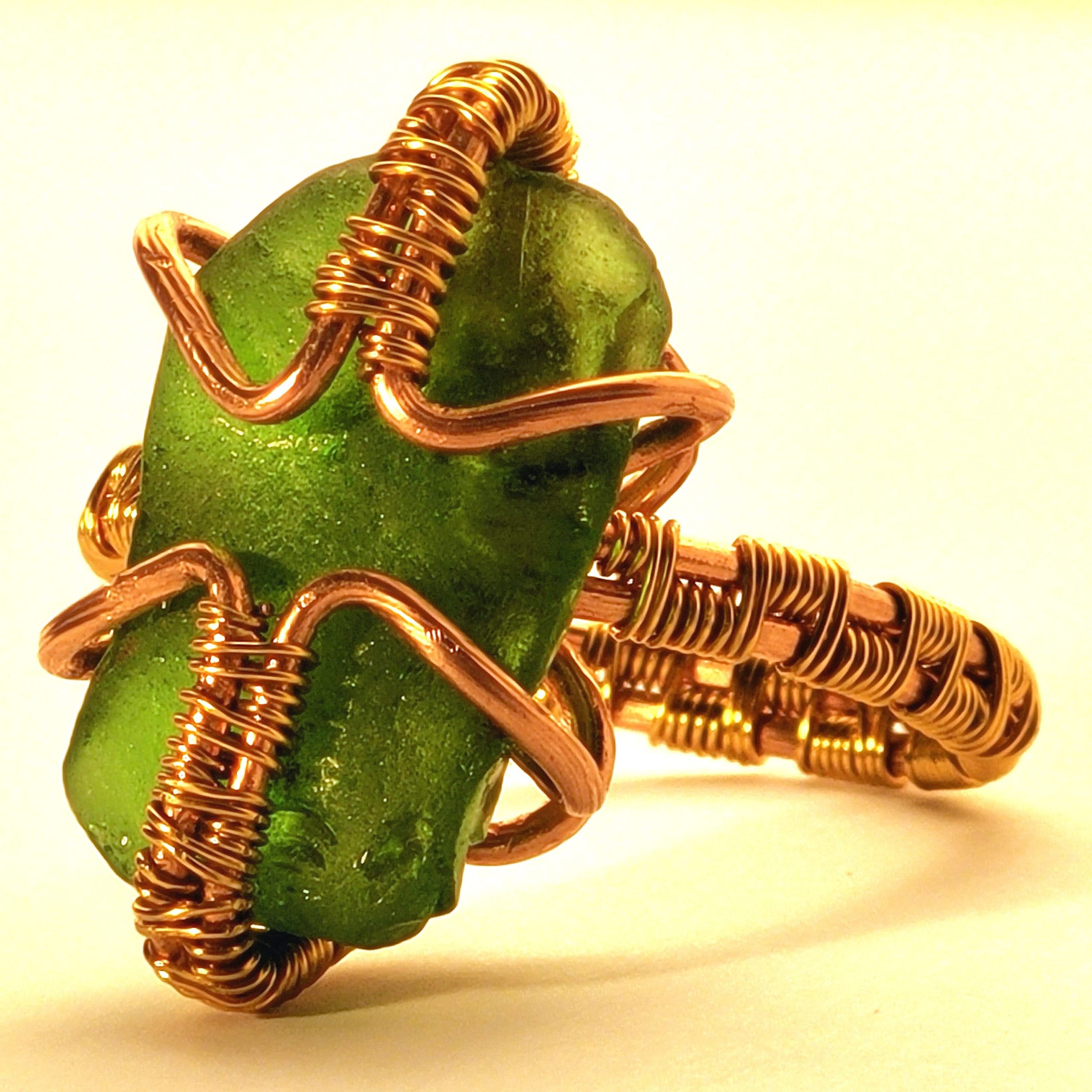
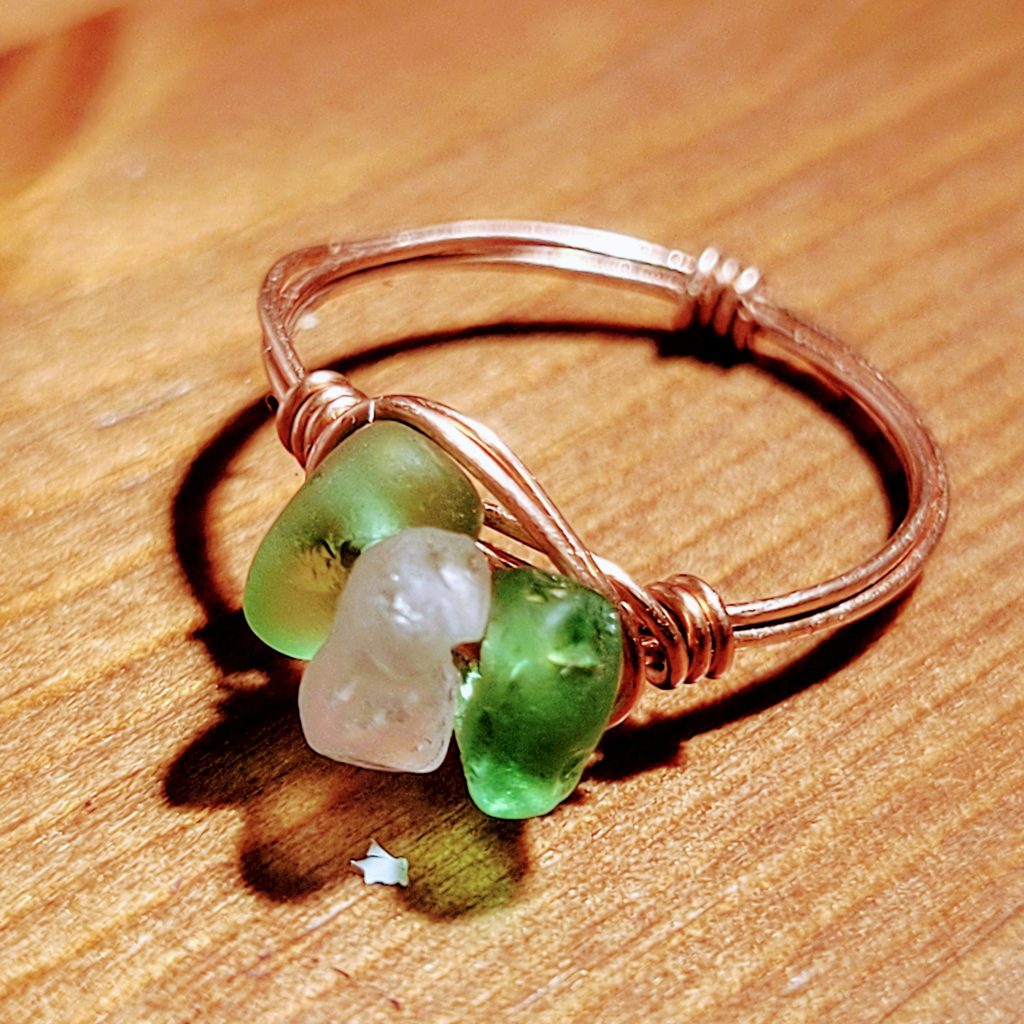
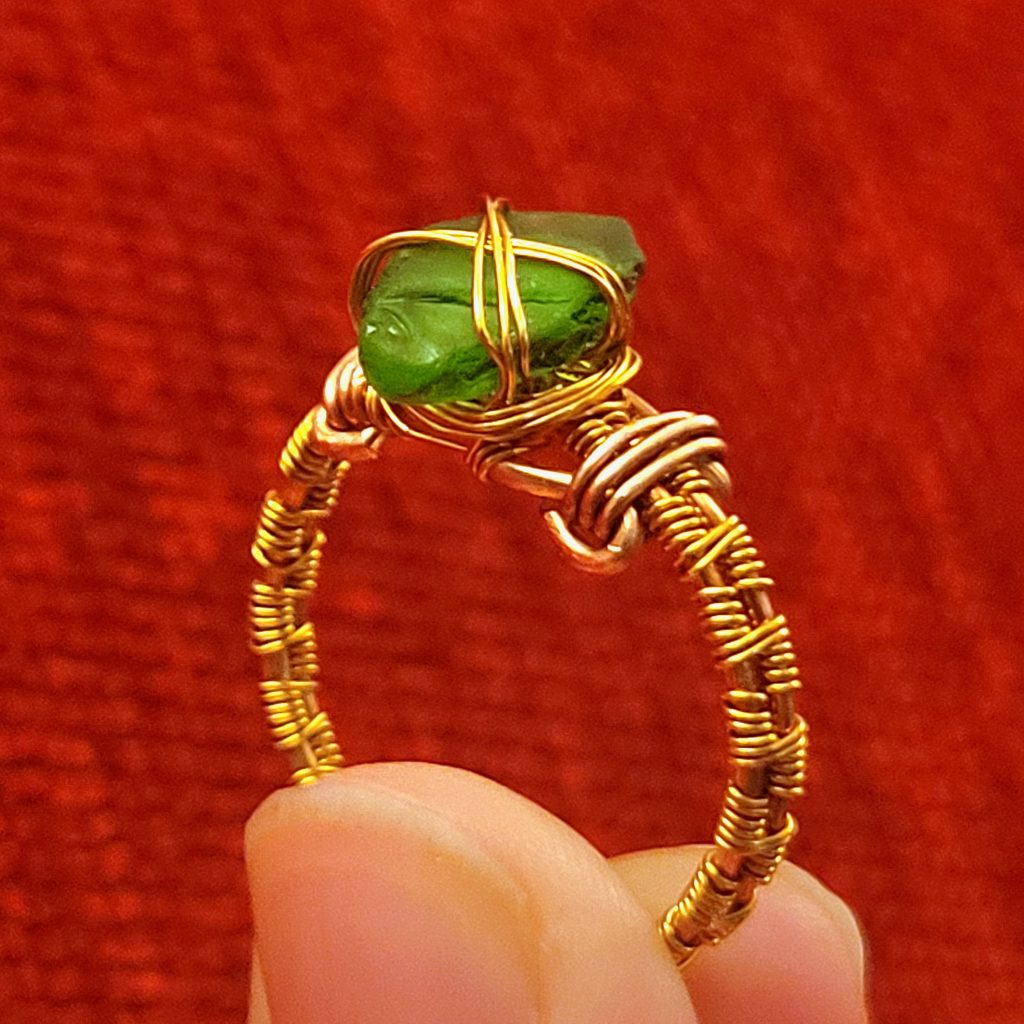
Hilary Larson (she/her)
Art Education, 2nd year
Knotty Wonders
Cotton cord, copper and aluminum wire, sea glass and stones
2021-2025
Description:
Hilary is a multidisciplinary artist whose practice ranges from drawing and painting to various other crafts. She began jewellery making after a summer spent gathering sea-glass from the shores of Gaspésie. Combining wire-wrapping with macramé, she uses bare metal wire and natural fibres to create unique pieces that will have a minimal impact on the environment when they—like we—inevitably return to the earth. You can check out more of her work on Instagram @one.hil.wonder.
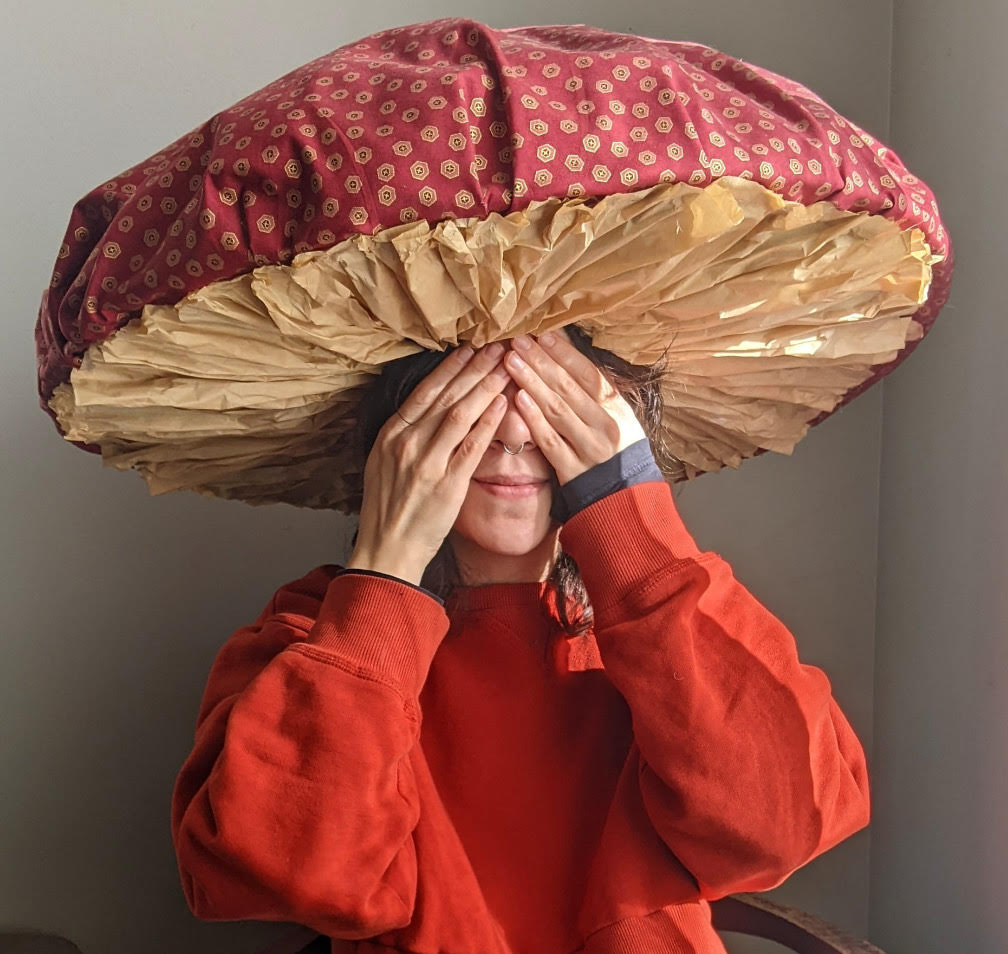
Maha-Gabriela Mogab-Campos (she/her)
Department of Art Education, 3rd year
Mushroom Hat
80 x 80 x 30 cm
Fabric, repurposed batting, cardboard boxes, Gandhi paper, tea dye, hot glue, masking tape
2023
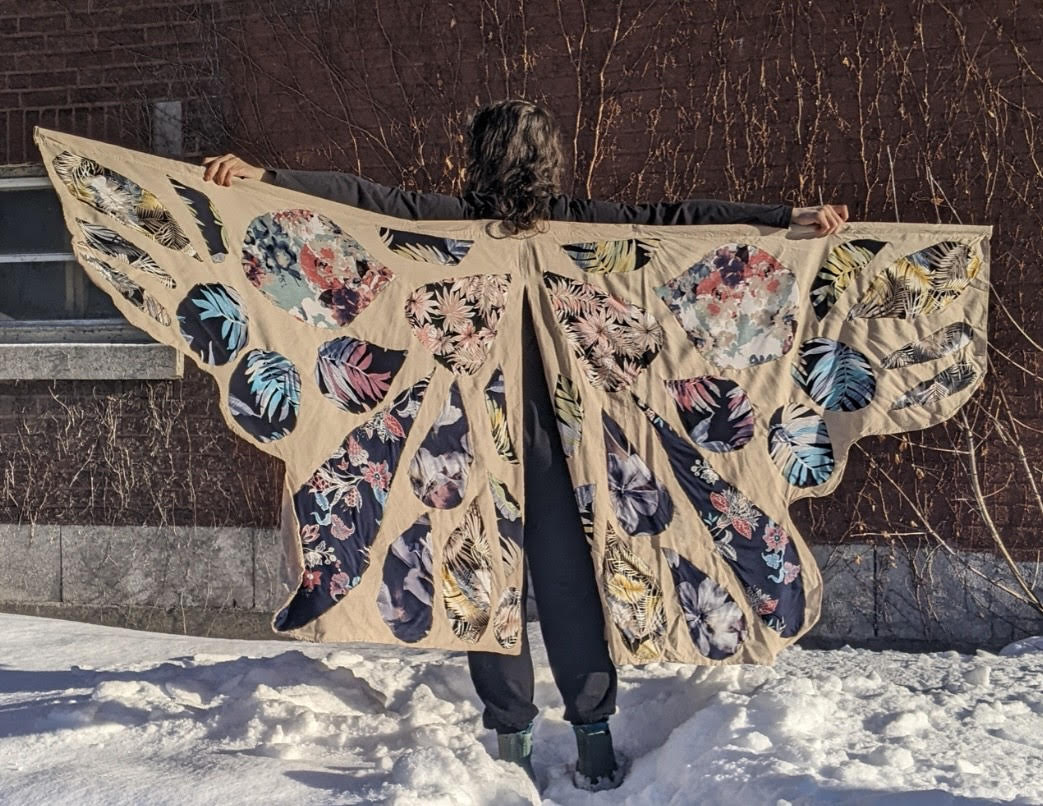
Butterfly Wings
103 x 225 cm
Tea dye, sheets, fabric samples from CUCCR, foraged wood branches, grocery bag, thread.
2024
Description:
Maha Gabriela Mogab Campos is a textile and visual artist with a special focus on sustainable practices. Her preferred mediums include oil and chalk pastels, charcoal, yarn, fabrics, paper, and natural elements. She always strives to reuse or repurpose materials before purchasing new ones. If there’s a way for her to make something instead of buying it, she will choose that route. Born in Montreal to immigrant parents, Maha spent most of her childhood between Lebanon and Costa Rica. This upbringing allowed her to appreciate the impermanence of things and draw connections between the diverse worlds she’s experienced. The constants in her life are her connections to people, food, nature, and herself. Creating art inspired by the natural world helps Maha continuously reevaluate and strengthen her connection to it while celebrating its richness and depth. Observation plays a critical role in her practice; she’s less concerned with reproducing things as they appear and more focused on how they appear to her. Her process is slow and deliberate, often marked by extended periods of rest. She places more value on her thought processes and personal growth—whether through the evolution of her skills or the development of her guiding philosophies—than on sheer productivity.
The mushroom and butterfly are both made entirely from foraged and repurposed materials. For the mushroom, Maha created a dome-like structure from cardboard boxes and covered it with batting and polyester fiber fill salvaged from old pillows and stuffed animals that her dog had torn apart. She then covered the structure with a beautiful piece of fabric that was gifted to her from someone’s stash. To create the gills, she brewed a strong tea to dye Hanji paper, which was then used in the final piece. Though it may not appear so, the mushroom cap is actually very heavy. For the butterfly wings, Maha used old white sheets that she no longer needed, which she dyed with tea. The intricate details were cut from fabric samples she found at CUCCR. She foraged two long branches to serve as a structure from which the wings hang. These branches allow the wearer to flap the wings. The wings are designed to be worn like a backpack, with a base made from a recyclable grocery bag and elastic straps to secure the piece to the wearer’s body.
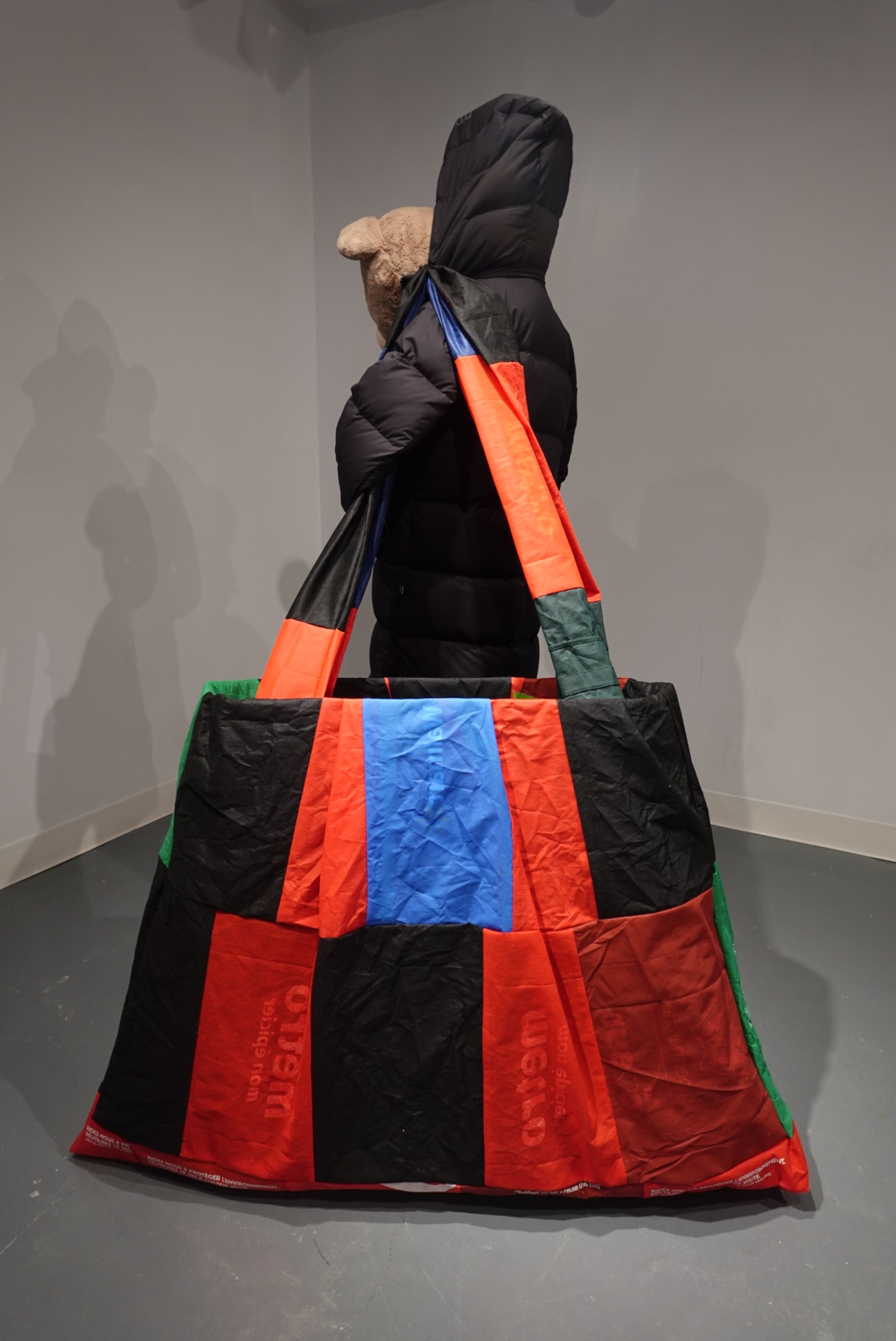
Eva Webb (she/her)
4th year, Art Education
Big Bag of Bags
3ft by 2ft
recycled bags
2024
Description:
Eva Webb (she/her) strives to be as sustainable as possible within her art practice. When she first began studying Art Education, her primary medium was drawing. However, since joining the program, she has had the opportunity to explore various art forms. One that has particularly excited her is sculpture.
During her classes, Eva realized that almost anything can be used to create a sculpture. She loved this discovery, because it freed her from expectation of purchasing expensive materials for assignments. When given an assignment titled, “the stories objects tell.” Webb knew she could create something extraordinary using only recycled materials.
She envisioned a comically large bag. Almost everyone carries a bag, and each one has a unique story – they come from somewhere and go someplace else. She wants the size of the bag to prompt viewers to consider not just its appearance, but also what it could carry. How much or how little? Why would someone carry these items, and what stories do they tell? By leaving the bag empty, she invites the viewer to create their own interpretations.
When choosing materials, Eva considered two overflowing drawers in her kitchen full of reusable grocery bags. It seemed perfect—a bag made from bags, with each one representing its own story. For the base structure, she used cardboard she found in her building’s garbage room. Once the base was built, the rest came together easily.
Discovering her passion for sculpture has shown Eva just how much she enjoys upcycling—transforming things others might see as trash into beautiful pieces full of potential, rather than letting them sit around as clutter with no purpose.
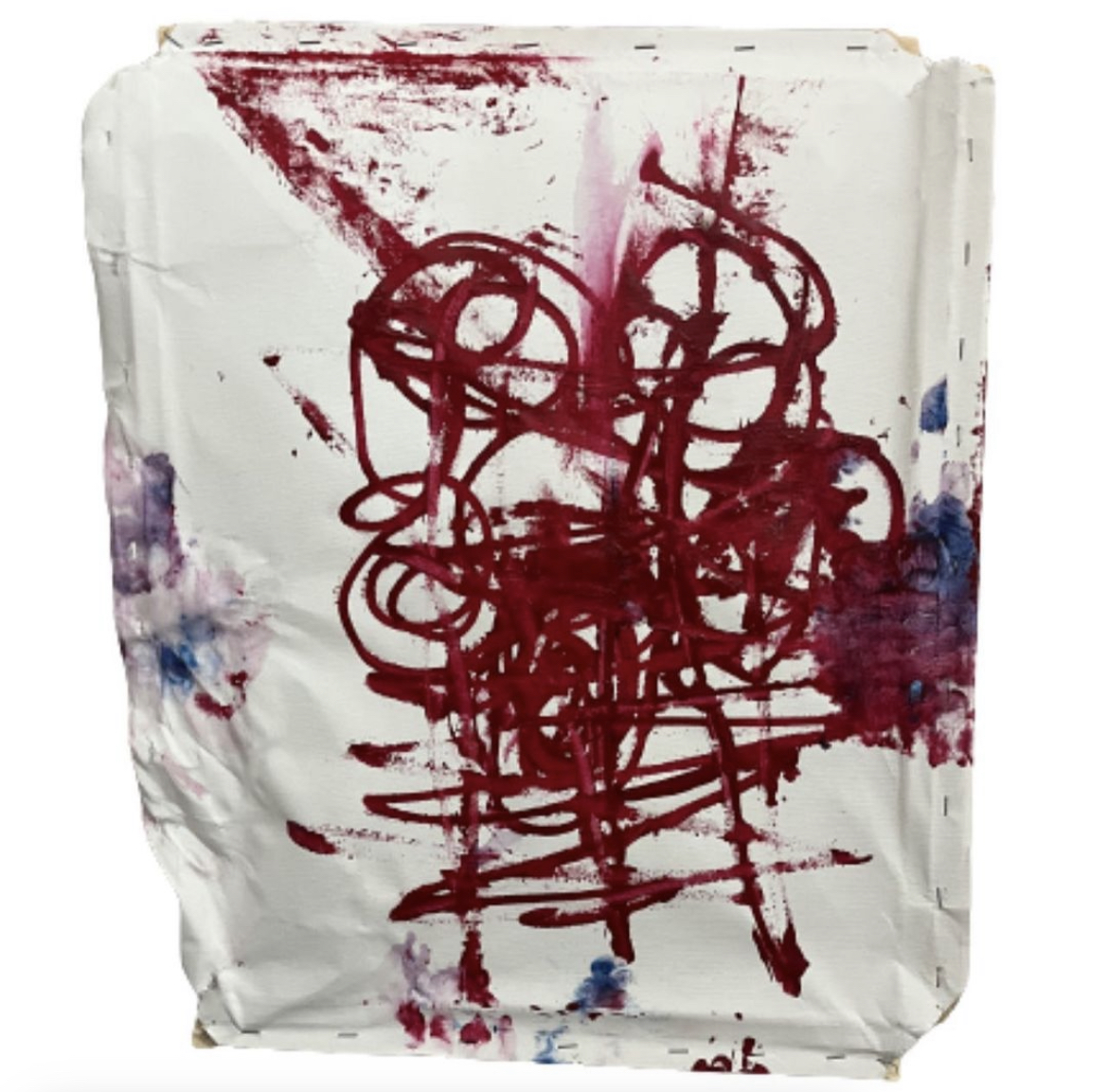
Skkandaloza
Studio Arts
Bachelor of F*cking Arts
Dimensions vary
10 minutes 5 seconds, live video performance & installation, mix objects
October 2023
Description:
Born in Lebanon, Skkandaloza identifies as a video performance artist. They moved to Montreal in August of 2022 in order to develop their artistic practice. As a queer Arab individual, they manifest in their works issues surrounding the Middle Eastern community. Through their performances, they express a reaction to present contemporary issues in the world and in their personal lives.
“Bachelor of F*cking Arts is a live video performance which aims to illustrate how the educational institution (such as art school) plays a role in killing the inner child inside of us. I wanted to explore how the educational system transforms our joy and innocence we have as kids in order to transform us into productive machines. After graduating from grade school, I was so excited to study art as a full time student. Unfortunately, even the things you love the most will seem like a task you need to complete with a lot of constraints to be able to graduate from university.
In this performance piece, I locked myself inside a shed and installed surveillance cameras connected to a TV outside the confined space. This allowed people to view the live footage, and see me as being an experiment by Concordia. Inside the shed, I began by acting like a kid having fun, but as the music would get intense and fast, and the more I’d start to harm myself and become manic. I wanted to show with the fast actions how much work is demanded from us: which will make us more likely to burn out.”
“The idea was to recreate in a smaller version the inside of the shed I was in with the destroyed painting I realized hanging and from a screen part of the performance is playing.”
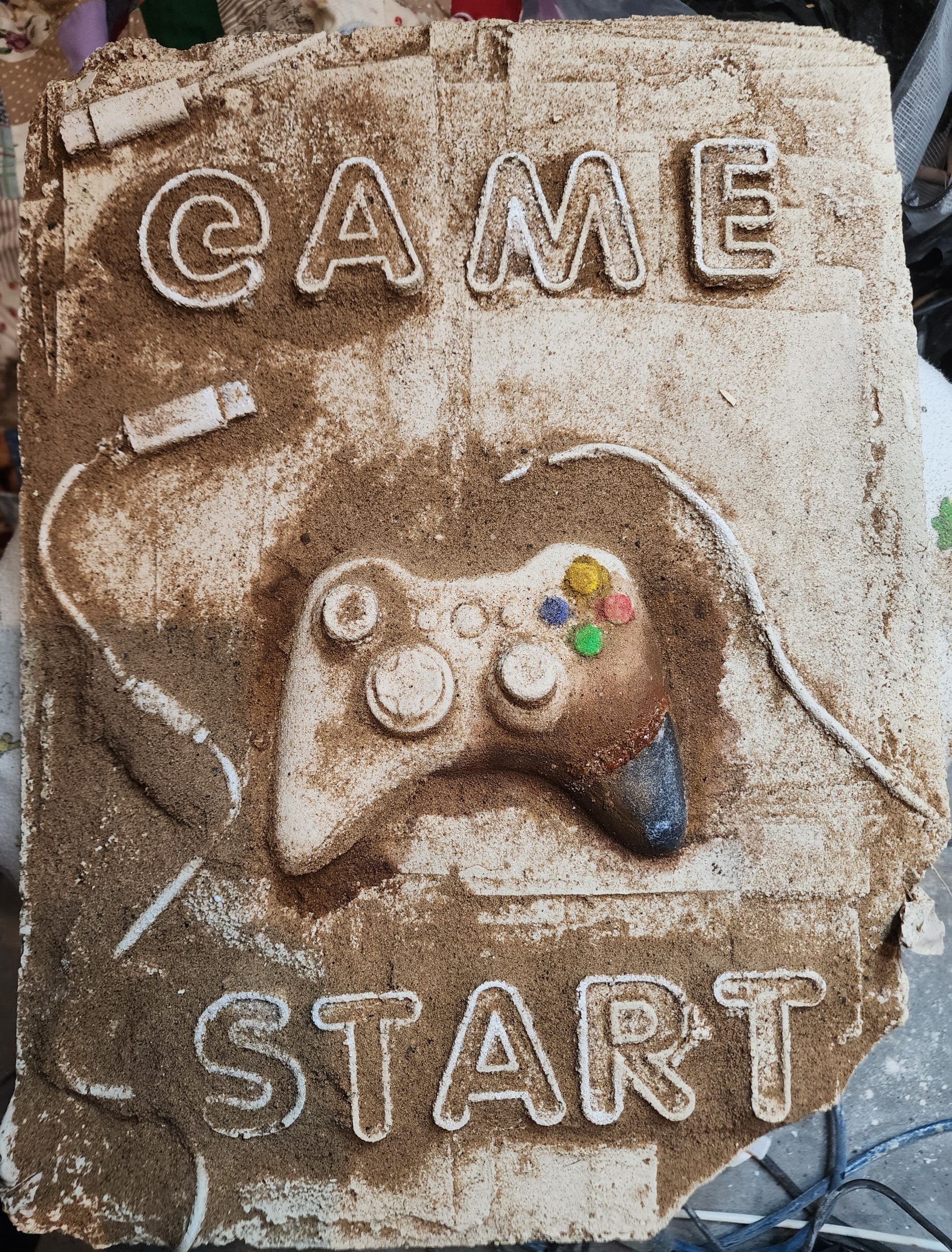
Alina Chamro
Painting and Drawing
Game Start
18″ x 15″
sand sculpture
2023
Description:
Alina Chamro is a Painting and Drawing major who has a background in finance and real estate. She recently returned to university to pursue her childhood dream of creating art. Through this degree, she is regaining her foothold in her own life, and she feels as if is rediscovering her true self. This sculpture acts as an ambiguous relic, frozen in time between the era of technological advances and of the world apocalypse. This sculpture of a game controller made of sand, which in of itself is related to notions of time through the hourglass, leaves viewers with questions rather than answers. It becomes ambiguous whether it was crafted in ancient times or if it is a greeting from the distant future warning us of a possible catastrophe. The use of sand creates an interactive element for viewers. Audience members are confronted with choices when observing this controller; they could feel it and touch the sand, imagine stepping on it; and see the cracks and a fallen piece off the shape, uncovering inside of the sand casket a modern game controller.
Childhood Quilt
40×30 in
acrylic paints and graphite pencil
2023
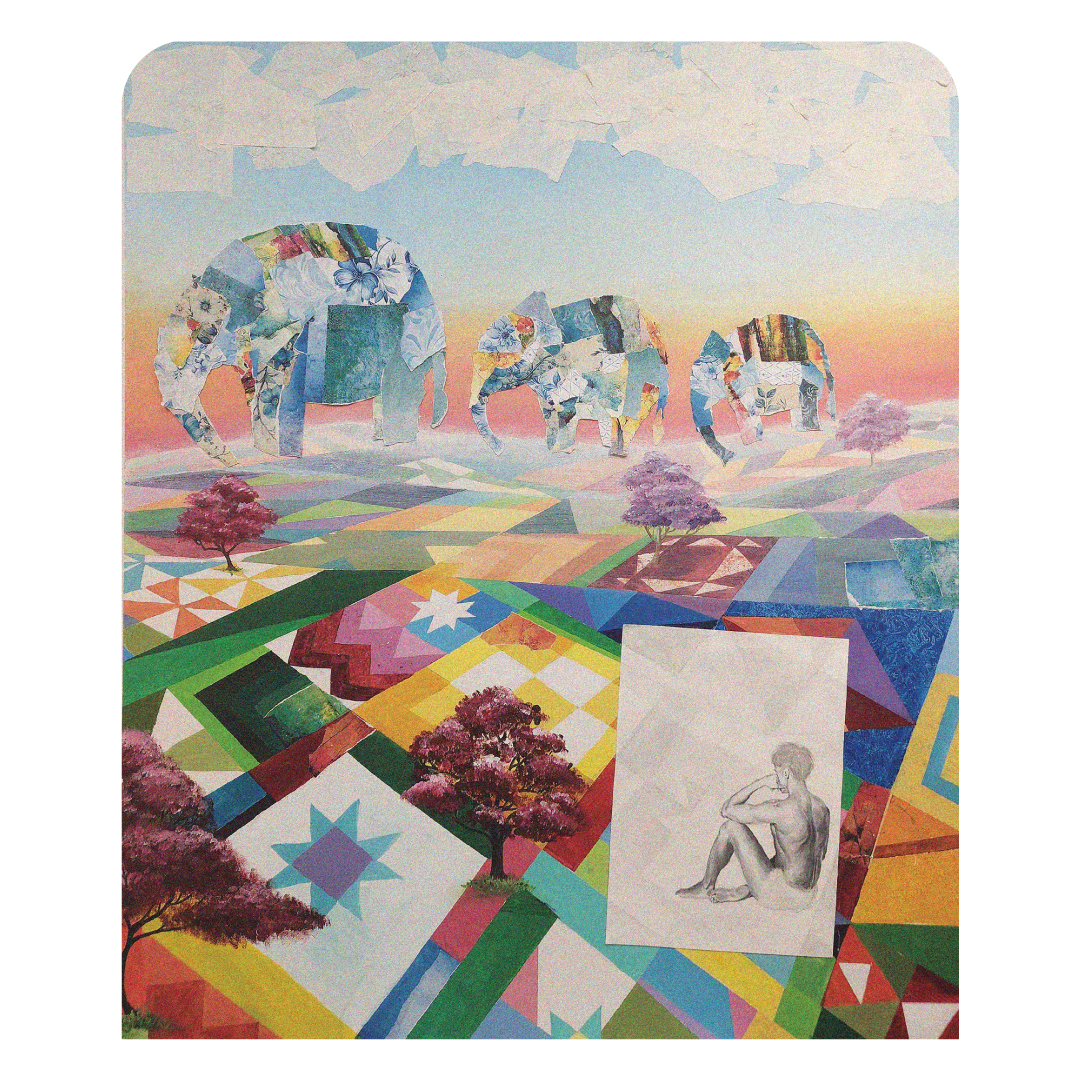
Description:
In Childhood Quilt, two images are juxtaposed against one-another. The large colourful background contrasts the smaller graphite figure. The bright landscape is a representation of my childhood memories, which often incorporated my mother’s hobby of making quilts. For me, this echoes the warm feeling of the intimate world of my inner child. The bird’s eye perspective recalls my childhood dreams of flying over the land, where there were no existing limits. The varying scale and elephants echo childlike dreams. The quilt represents a sense of home, as it is comforting and it symbolizes a safe place. The figure, representing an adult, is isolated from the rest of the image and devoid of any colours. We do not see his face, thus his emotions are uncertain. Perhaps he is sad, perhaps he’s wondering, or perhaps he is simply watching. Perhaps, the viewer is left to question the storyline, thus creating our own narrative.
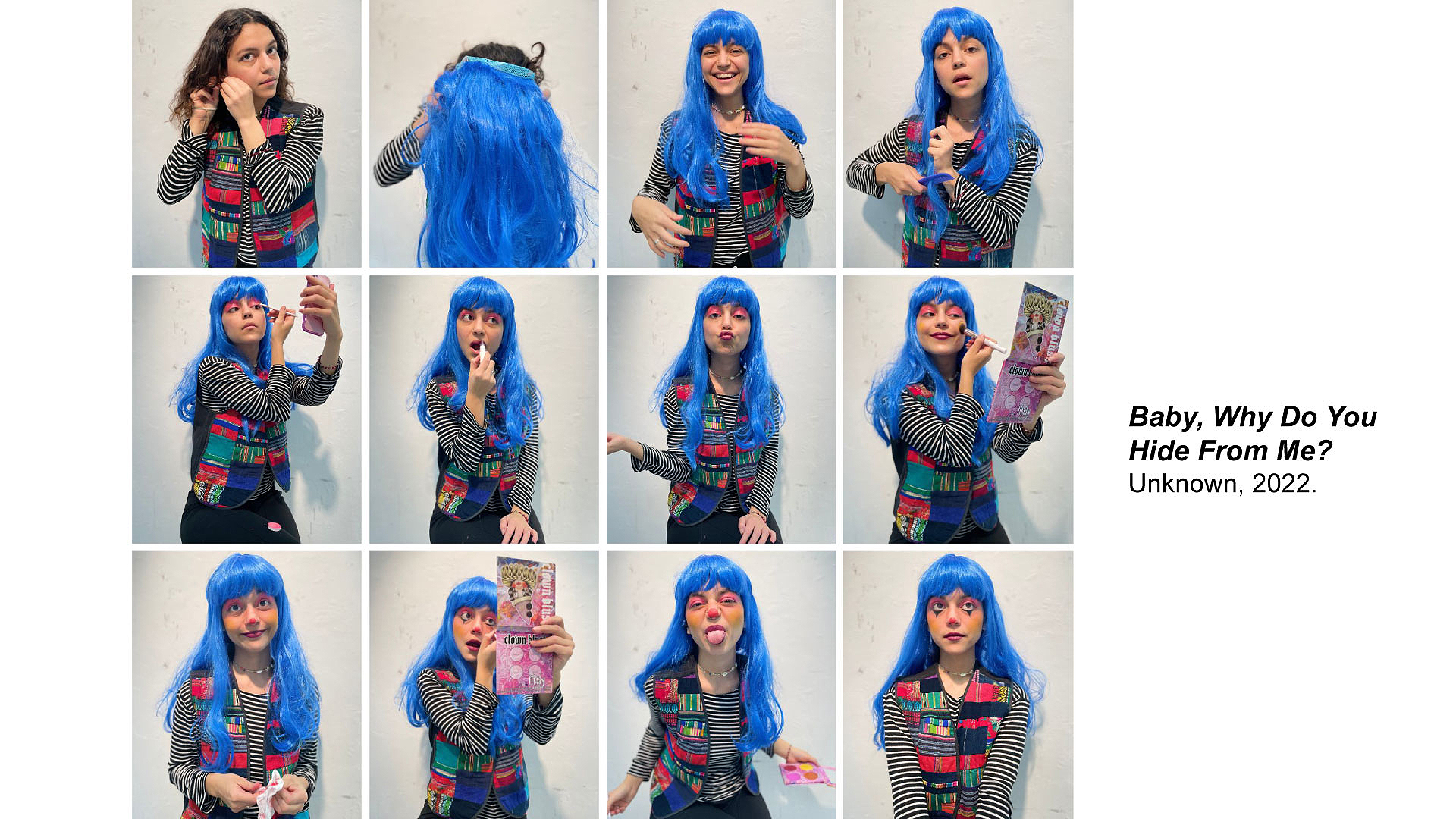
Mujer Platanito
Studio Arts, Art Education
Baby, Why do you hide from me?
Dimensions vary
performance, photography, lesson plan
Fall 2022
Description:
Baby, Why Do You Hide From Me? Is a series of portraits which depicts the artist transforming into an alter ego. The viewer is asked to see the artist and themselves from various perspectives, in order to question how identity and gender can be more of a malleable performance rather than a fixed concept. The audience is welcome to manipulate the piece by changing the order of the portraits displayed on the wall.